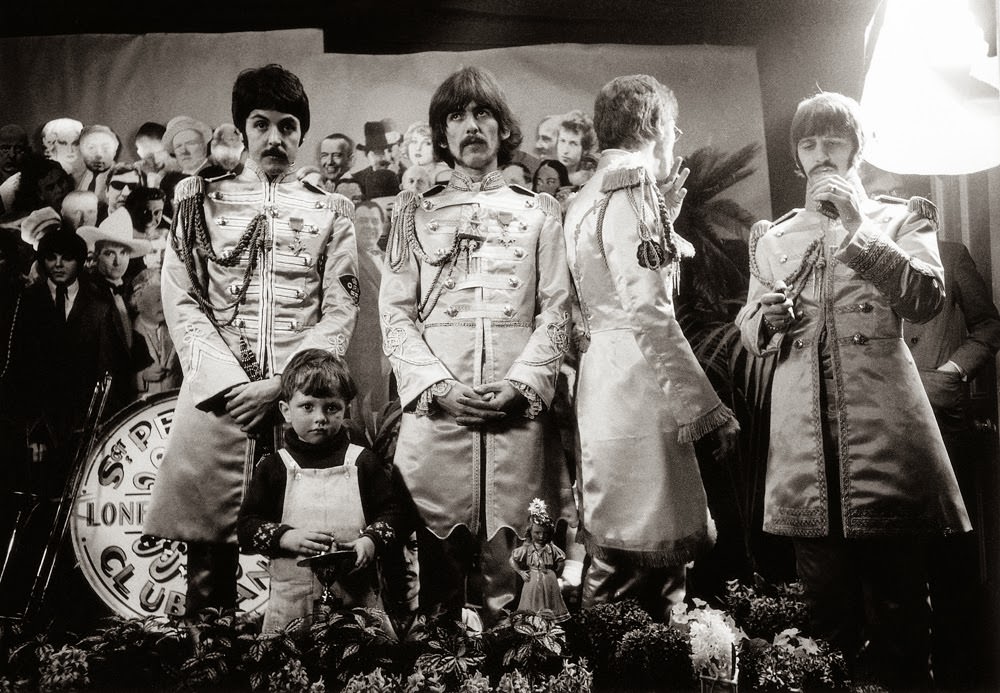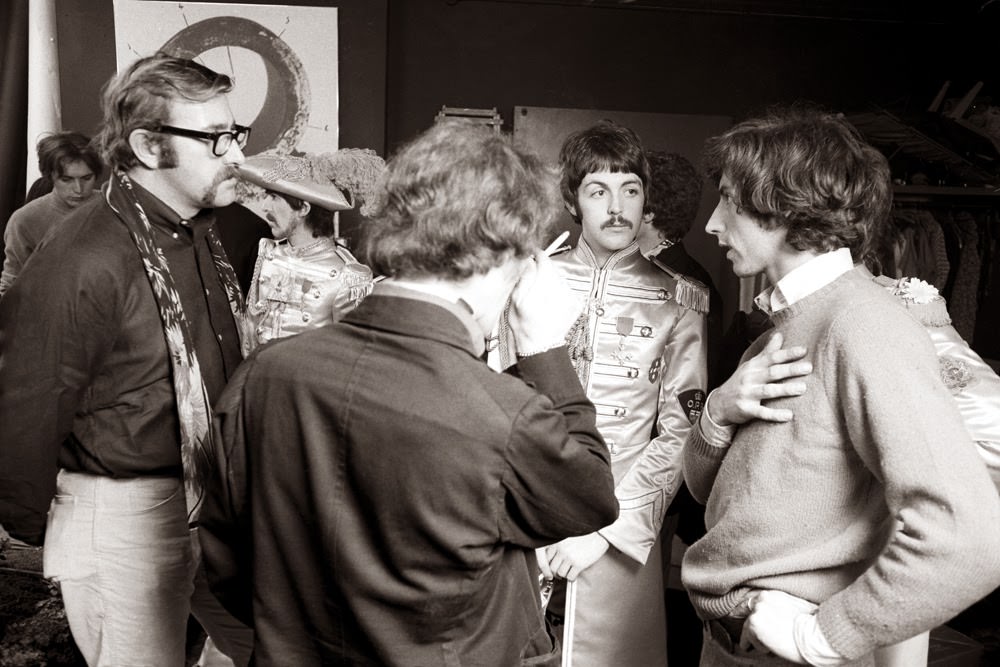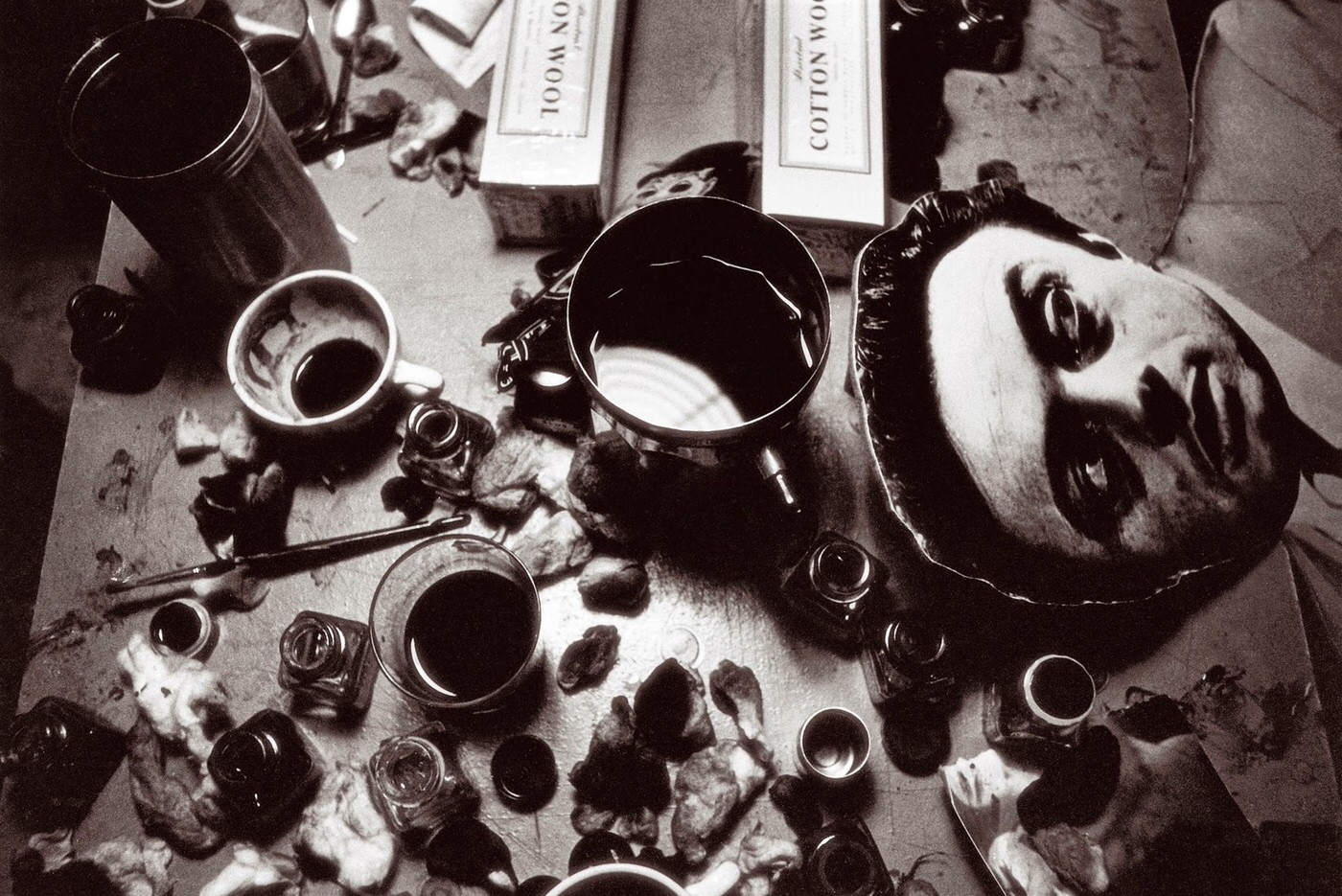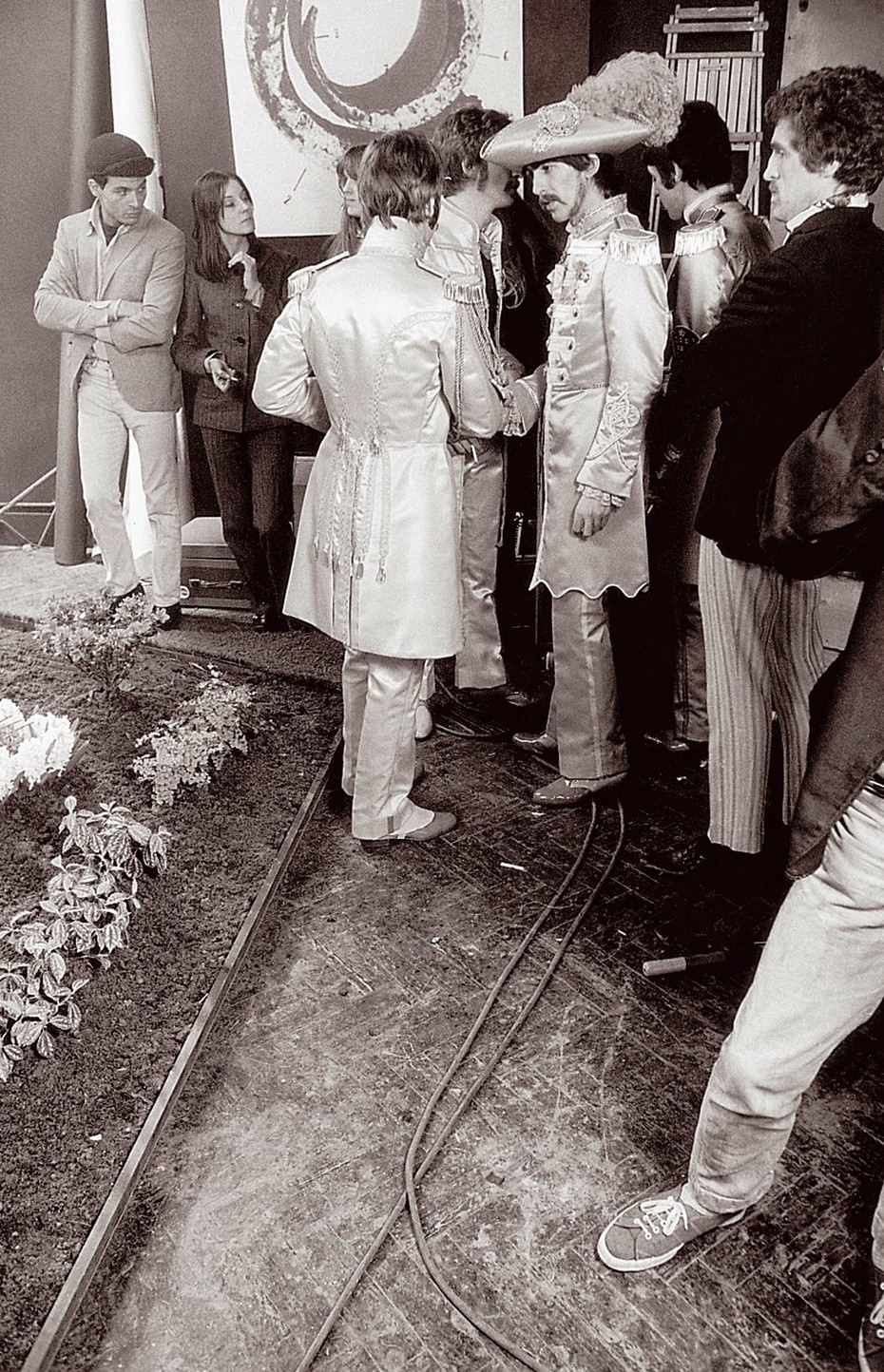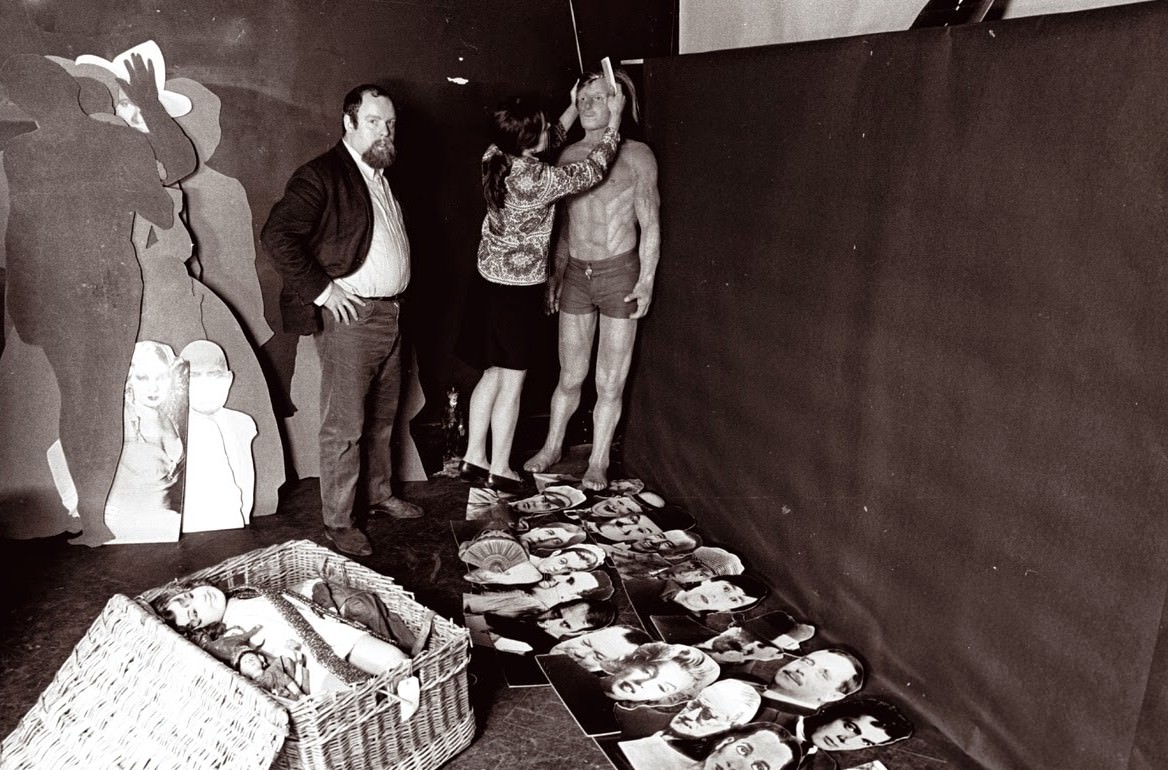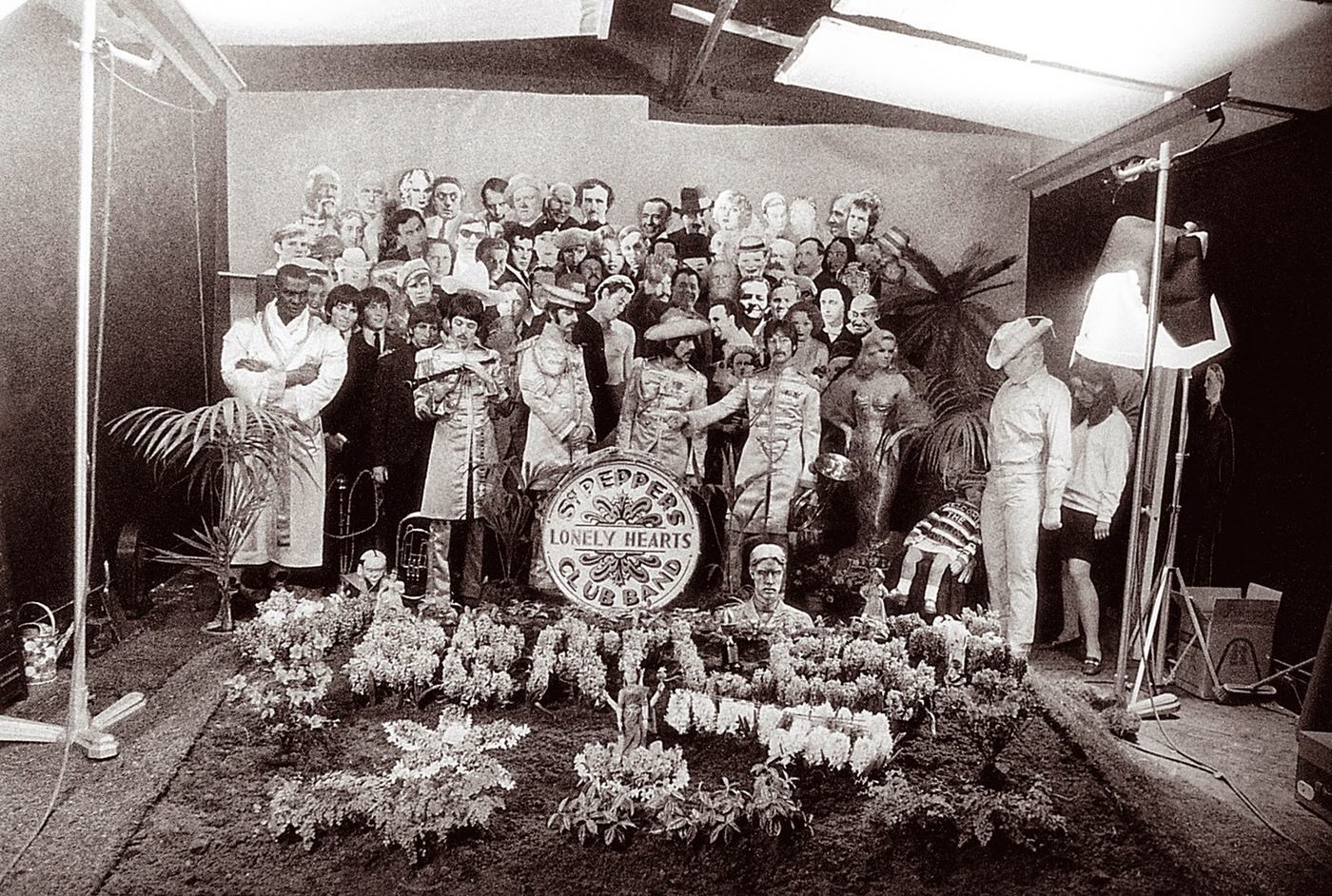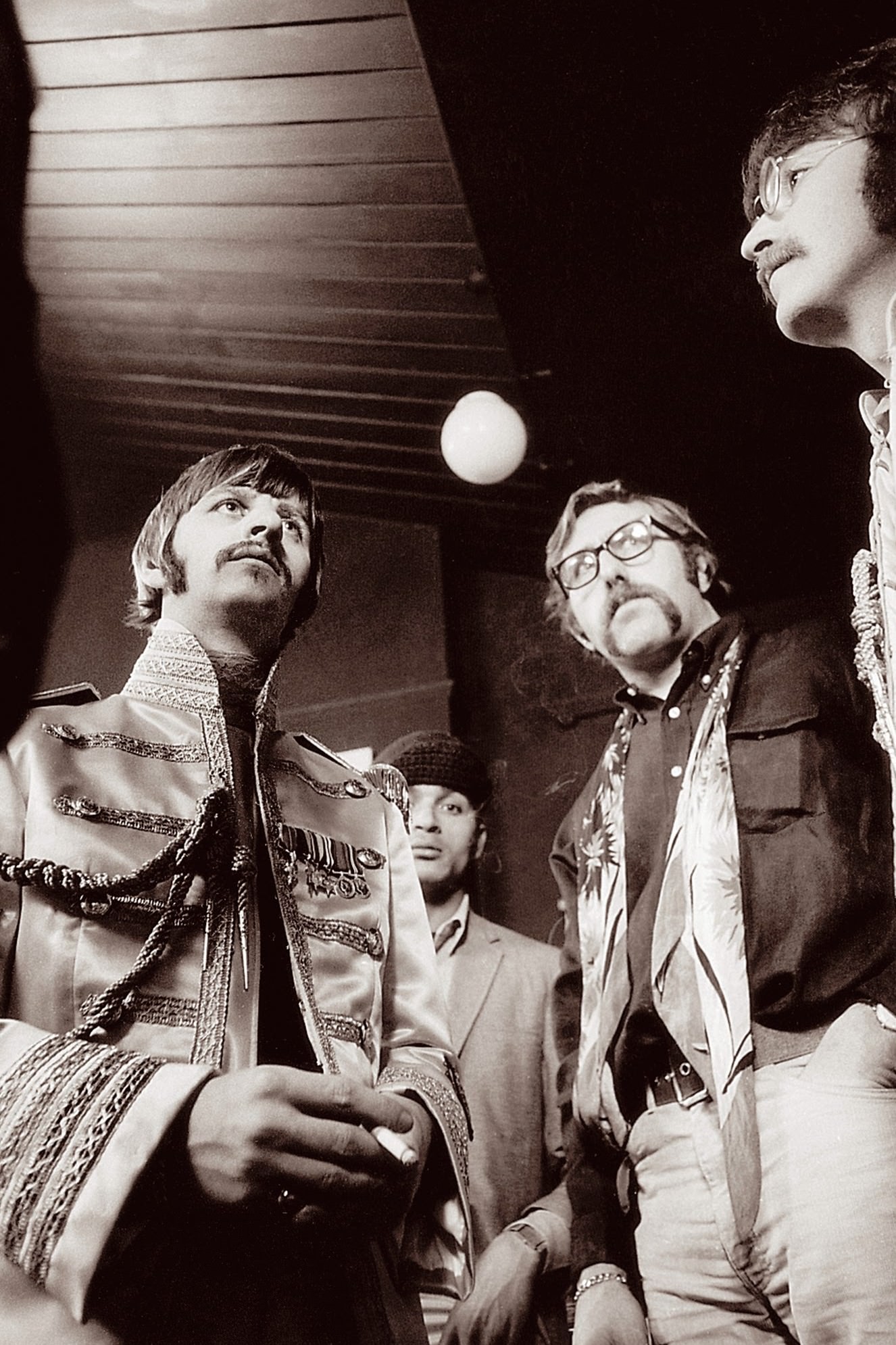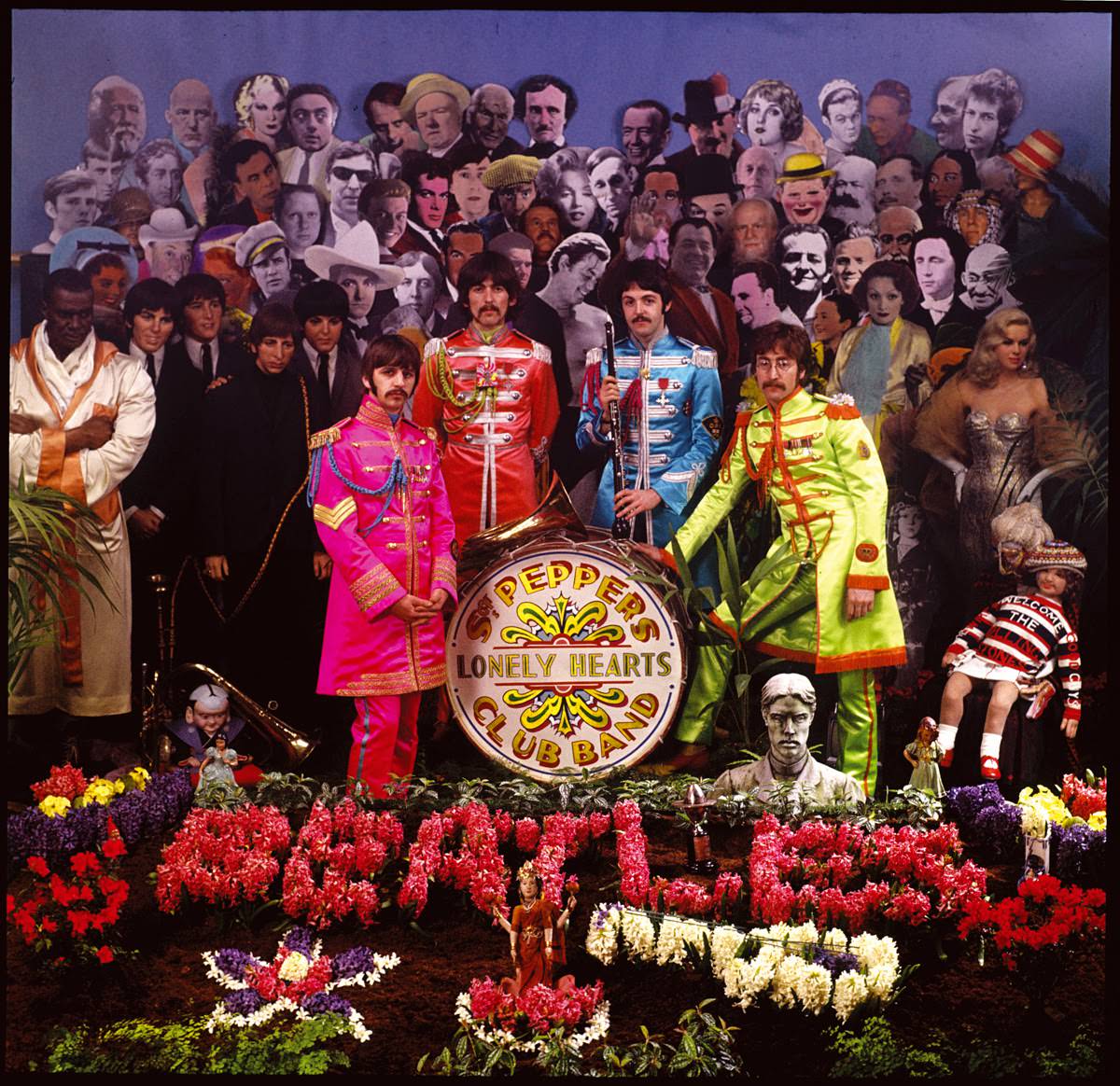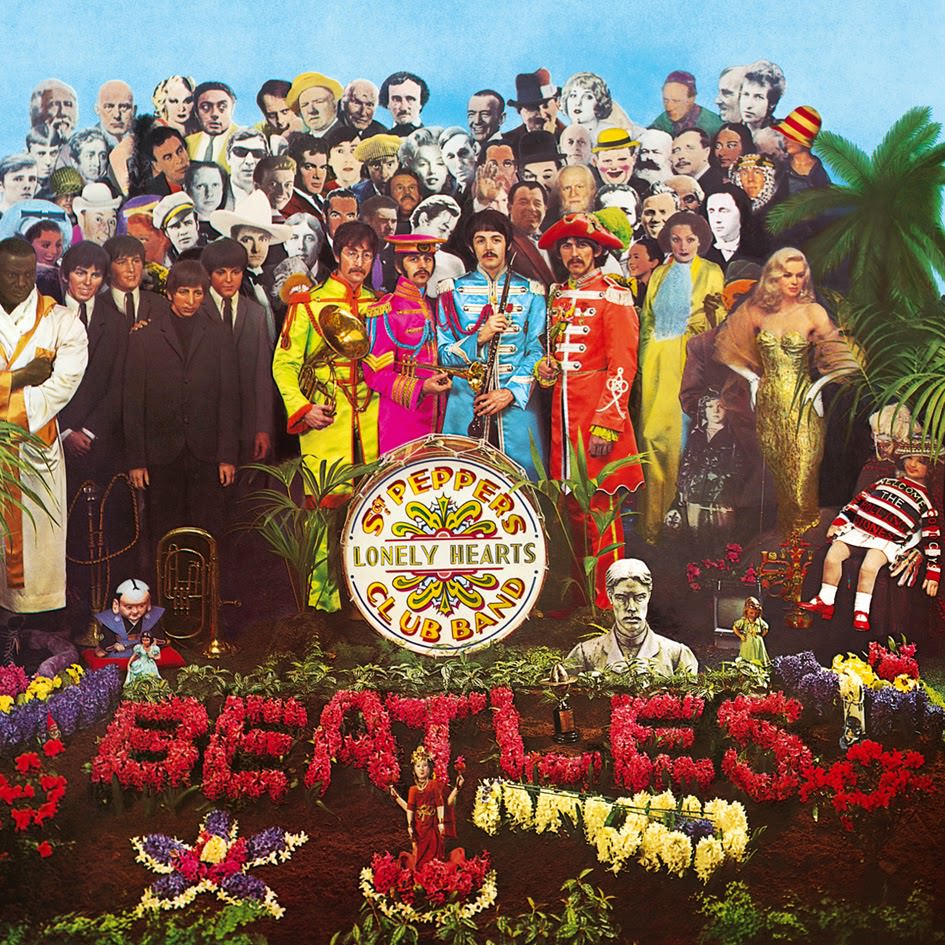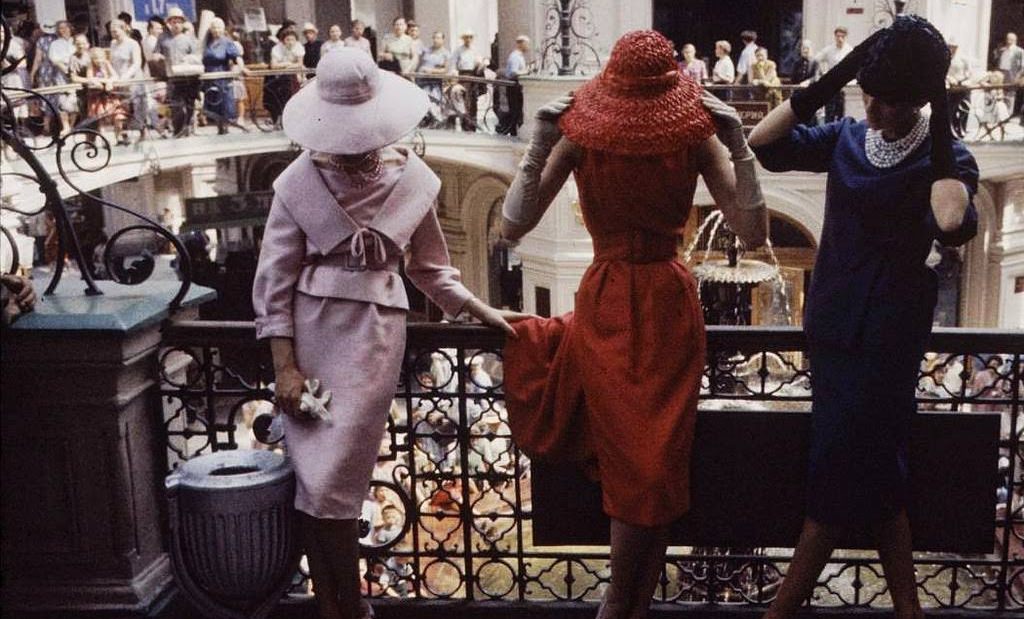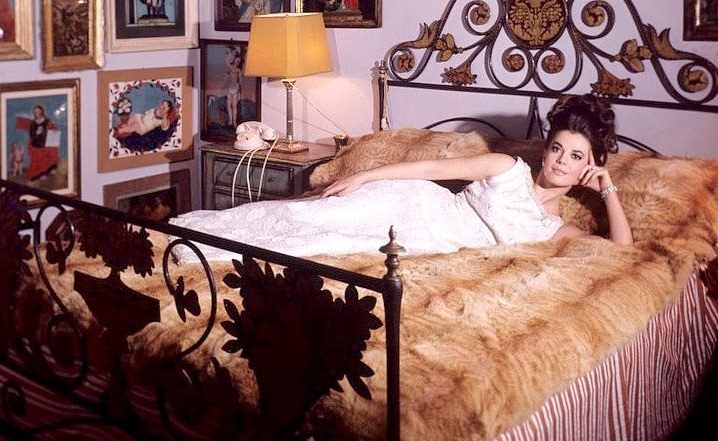The album Sgt. Pepper’s Lonely Hearts Club Band dropped on June 1, 1967, and music would never be the same. It shot straight to the top of the charts in both the UK and the US, staying there for weeks. Even the cover of this Grammy-winning album became instantly iconic.
The wild and colorful artwork was the brainchild of pop artists Peter Blake and Jann Haworth, based on a simple drawing by Paul McCartney. Robert Fraser directed the art, and Michael Cooper snapped the photos. It was a collaborative, slightly chaotic process.
Paul McCartney described it best: “We all just chose oddball things from everywhere and put them together. We all chose our own colours and our own materials: ‘You can’t have that, he’s having it…'” This gives a glimpse into the individual choices and playful disagreements that fueled the creative energy.
The album’s front cover is a visual feast. It shows The Beatles dressed in vibrant costumes as the fictional Sgt. Pepper’s Lonely Hearts Club Band. They stand among a crowd of life-sized cardboard cutouts of famous figures, chosen by the band members themselves. This wasn’t just a random selection; each figure held some significance for at least one of the Beatles.
Read more
Look closely, and you’ll notice the heavy mustaches the band sported. This reflected the growing popularity of hippie styles at the time. Their military-style clothing, however, was a fun take on the British trend for military fashion, according to Beatles biographer Jonathan Gould. It was a way to be both fashionable and a little bit cheeky.
Right in the center of the cover, The Beatles are positioned behind a drum skin. A fairground artist named Joe Ephgrave painted the album’s long title onto this drum. Just in front of it, an arrangement of flowers spells out “Beatles,” a sweet and personal touch.
The band’s outfits were truly something special. They wore satin military-style uniforms in bright, almost glowing colors. These unique costumes were custom-made by a theatrical costumer in London called M. Berman Ltd. These weren’t off-the-rack clothes; they were designed to be part of the overall artistic statement of the Sgt. Pepper persona. The whole scene was a carefully constructed piece of art, full of personal touches and reflecting the spirit of a revolutionary time in music and culture.



